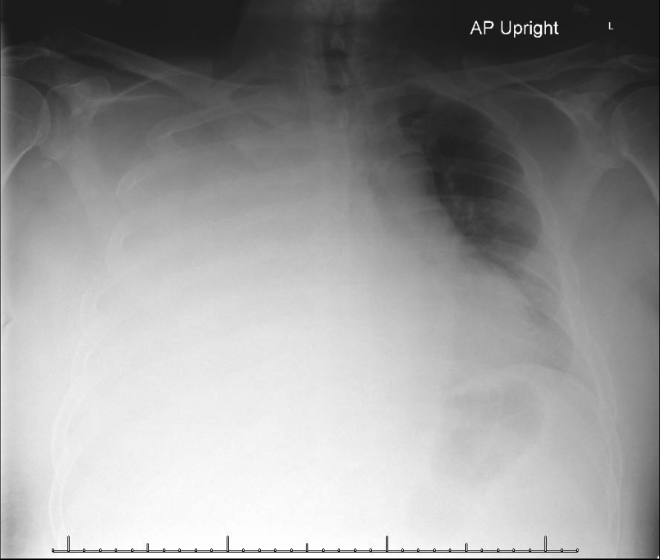Step 1
Master radiographic anatomy.
Radiologists need to know least four “kinds” of human anatomy. These are (1) “regular” anatomy, which is what most medical students focus on in medical school, (2) cross-sectional anatomy, (3) sonographic anatomy, and (4) palpatory anatomy (for procedures). I recommend:
- Human Sectional Anatomy: Pocket Atlas of Body Sections, CT and MRI Images (2009, reviewed here)
- Sectional Anatomy for Imaging Professionals (2012), and
- Sonography: Introduction to Normal Structure and Function (2010).
Step 2
“Own” the chest x-ray, or chest radiograph, as radiologists like to call it.

Chest radiographs comprise approximately 40% of all imaging studies. If you excel at reading chest x-rays, you excel at doing almost half of what the average radiologist does for a living.
- Novices might want to start with Chest X-rays for Medical Students, 1e, by Christopher Clarke
- The Chest X-Ray: A Survival Guide by Gerald de Lacey (2008, reviewed here) is a superb place to start for residents.
- Chest X-Ray – Heart Failure is free here.
- Advanced learners might like Principles of Cardiovascular Radiology, 1e, by Stuart J. Hutchison MD
Step 3
“Own” the brain CT, which is, again, one of the most common imaging studies.
- Use Brain CT Scans in Clinical Practice (2009, reviewed here) to get started. It is only 122 pages long, but it too is one of the best medical books of all time.
- Focus on the vascular territories with free tutorials here and here.
- If you are looking for additional neuroradiology exposure, you can use Neuroradiology Companion: Methods, Guidelines, and Imaging Fundamentals, 4e by Mauricio Castillo, which is also excellent.
Step 4
Learn how to make the most important radiology diagnoses. Start with Learning Radiology, Recognizing the Basics, 3e, by William Herring MD (second edition reviewed here). It too is one of the best medical books of all time.
Step 5
Get to know Symptom Based Radiology (2011, reviewed here). It will help you help you, and help others, order the appropriate imaging studies.
Step 6
For reference, use Radiology Review Manual (2011). It is loaded with important radiographic findings.
Step 7
Use an ultrasound machine at every opportunity: abscesses, fractures, abdominal pain, foreign bodies, breasts, thyroids, testicles, pleural effusions, endotracheal intubations, etc. This is by no means sufficient for mastery, but it will be a great start.
Step 8
Subscribe to radiology feeds and tweets and follow them regularly.


Leave a Reply